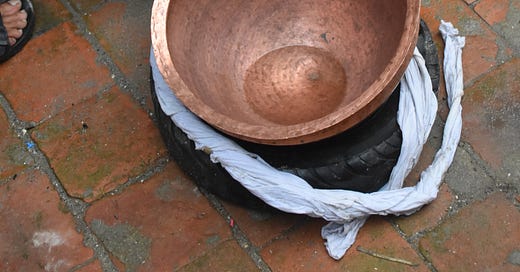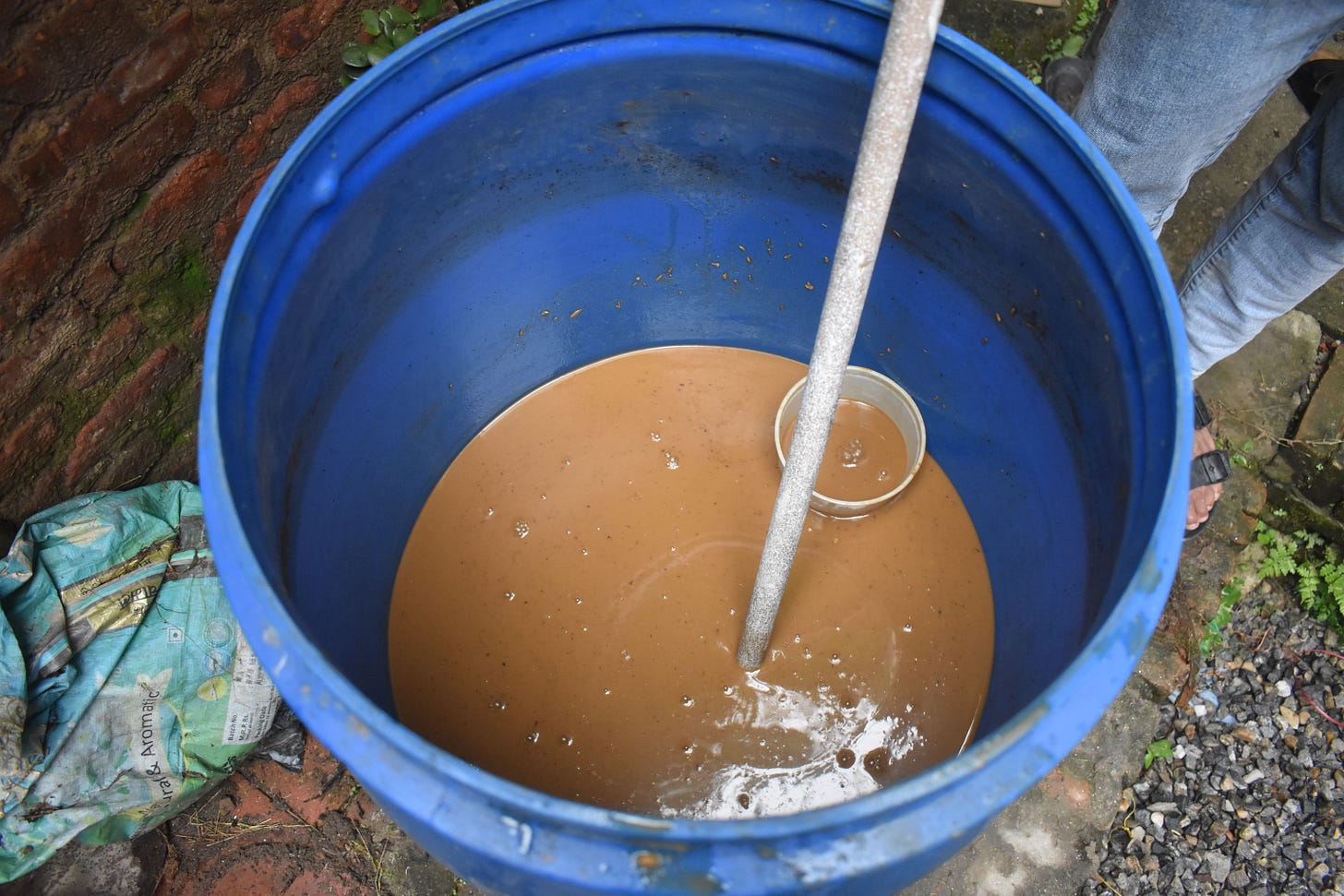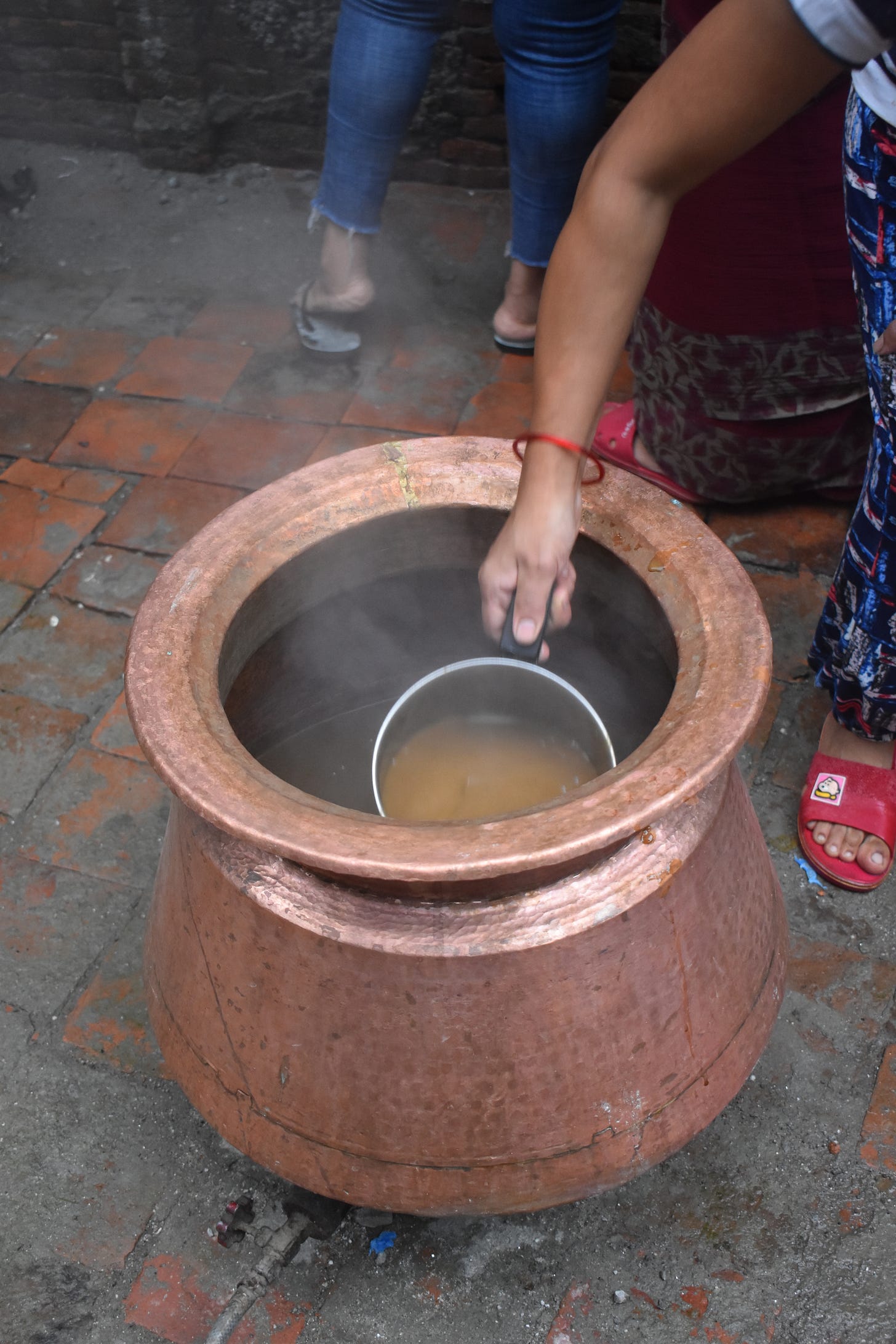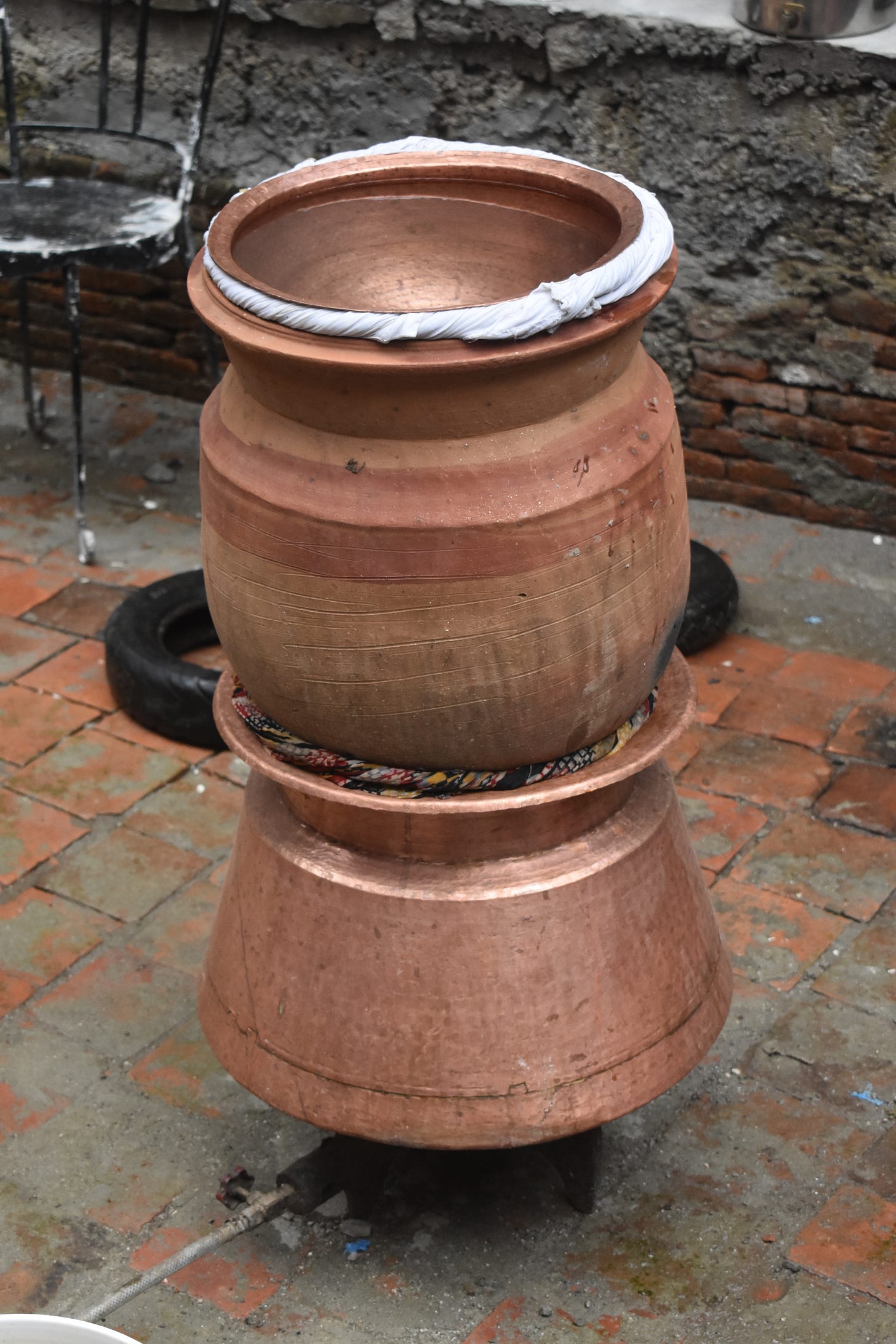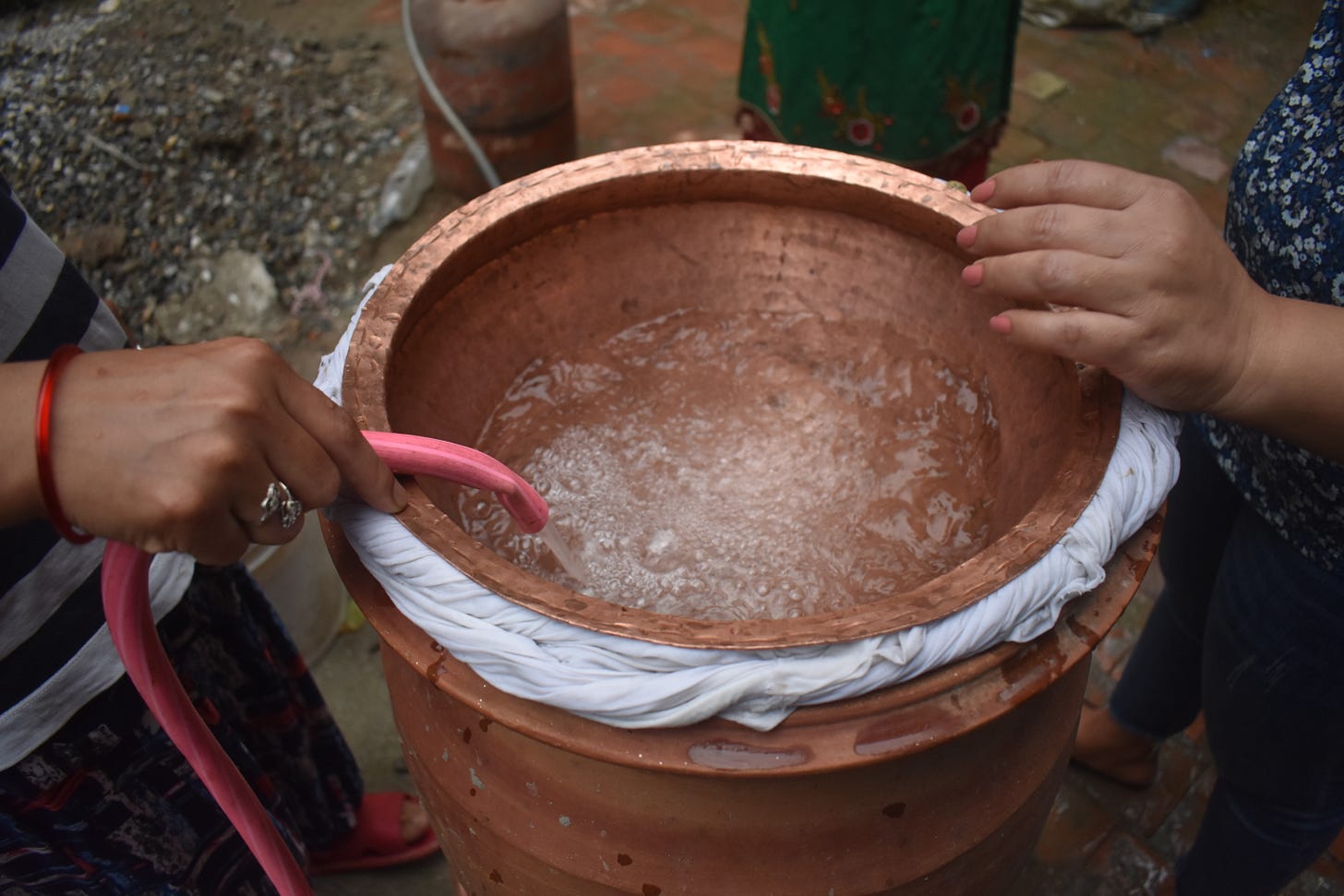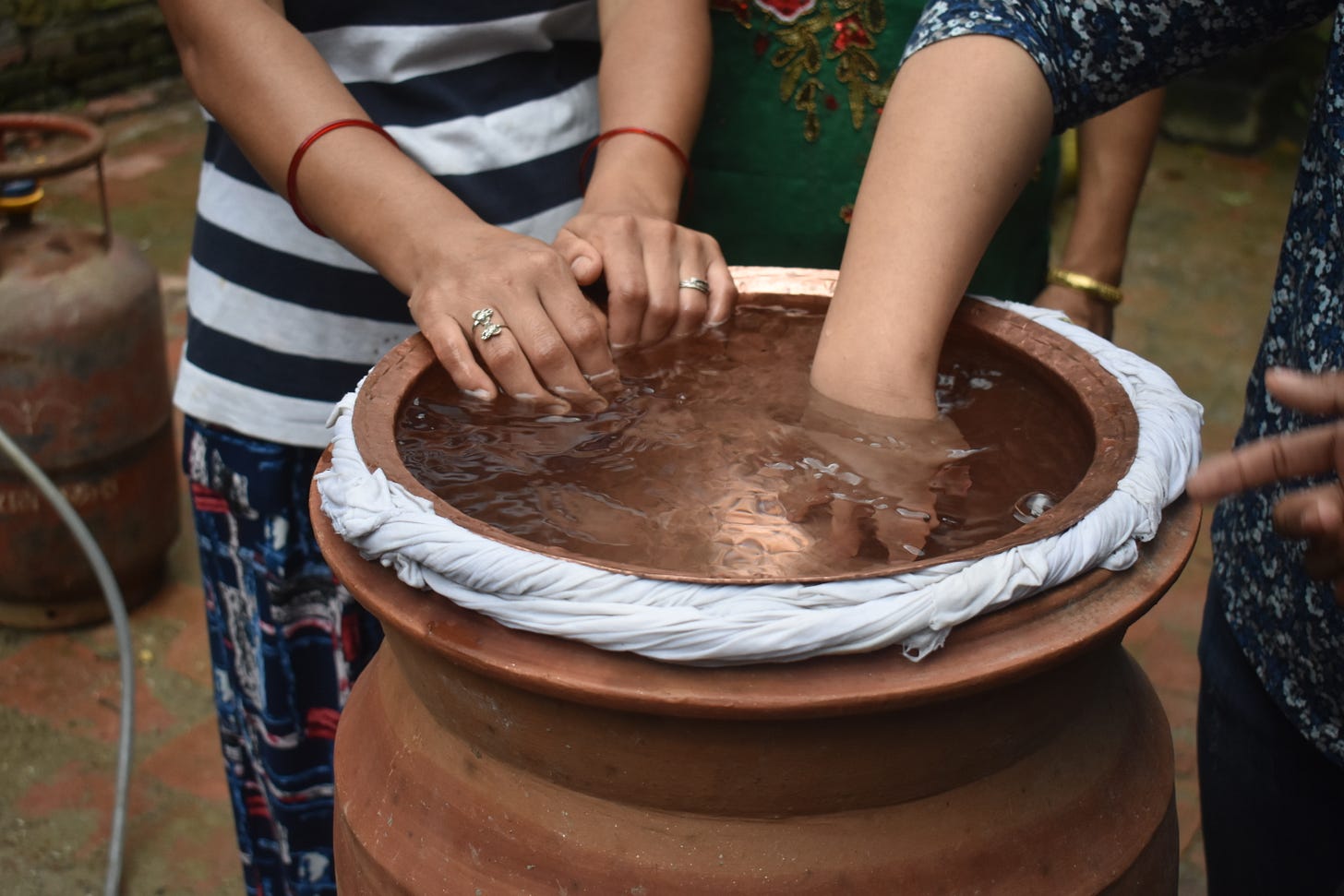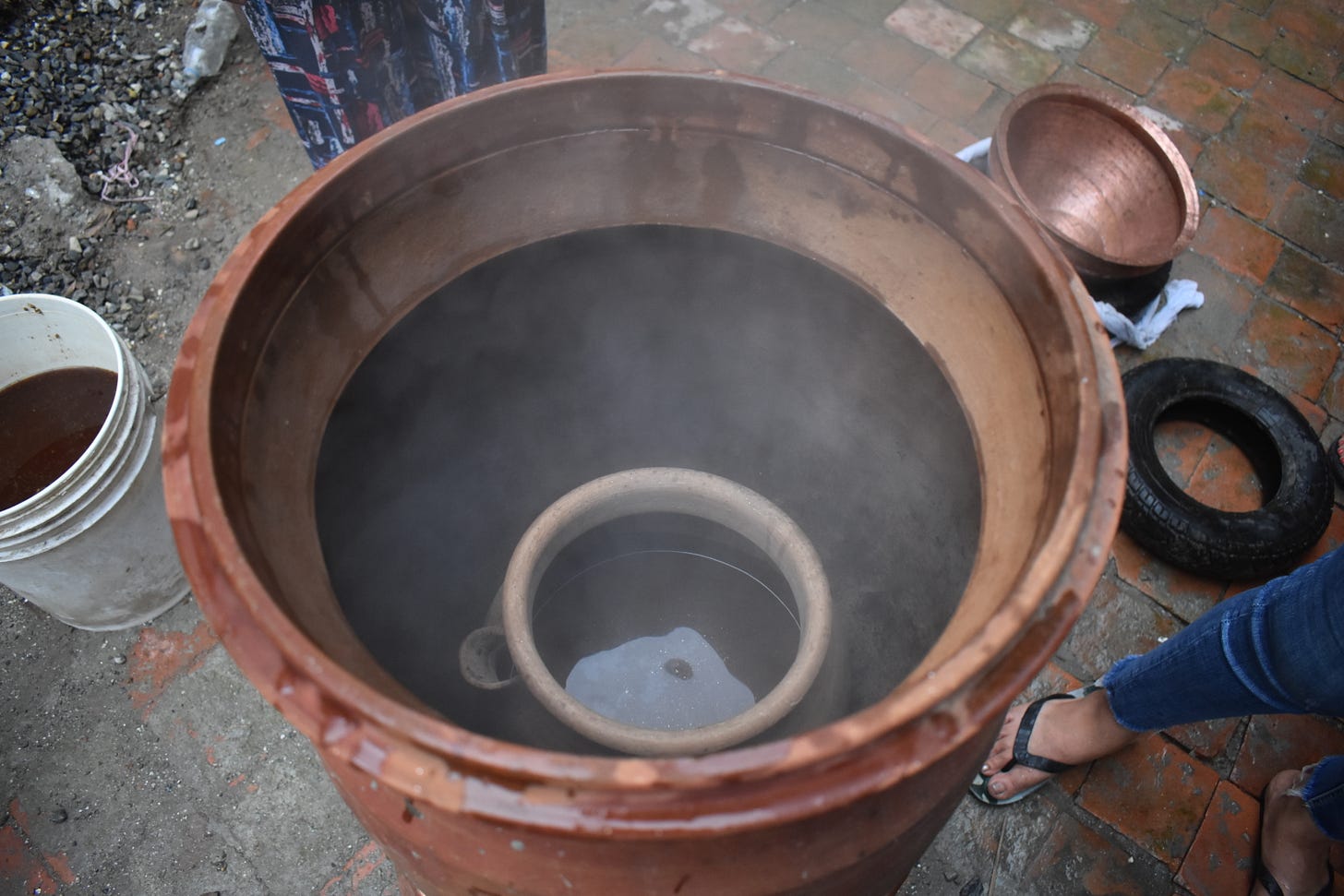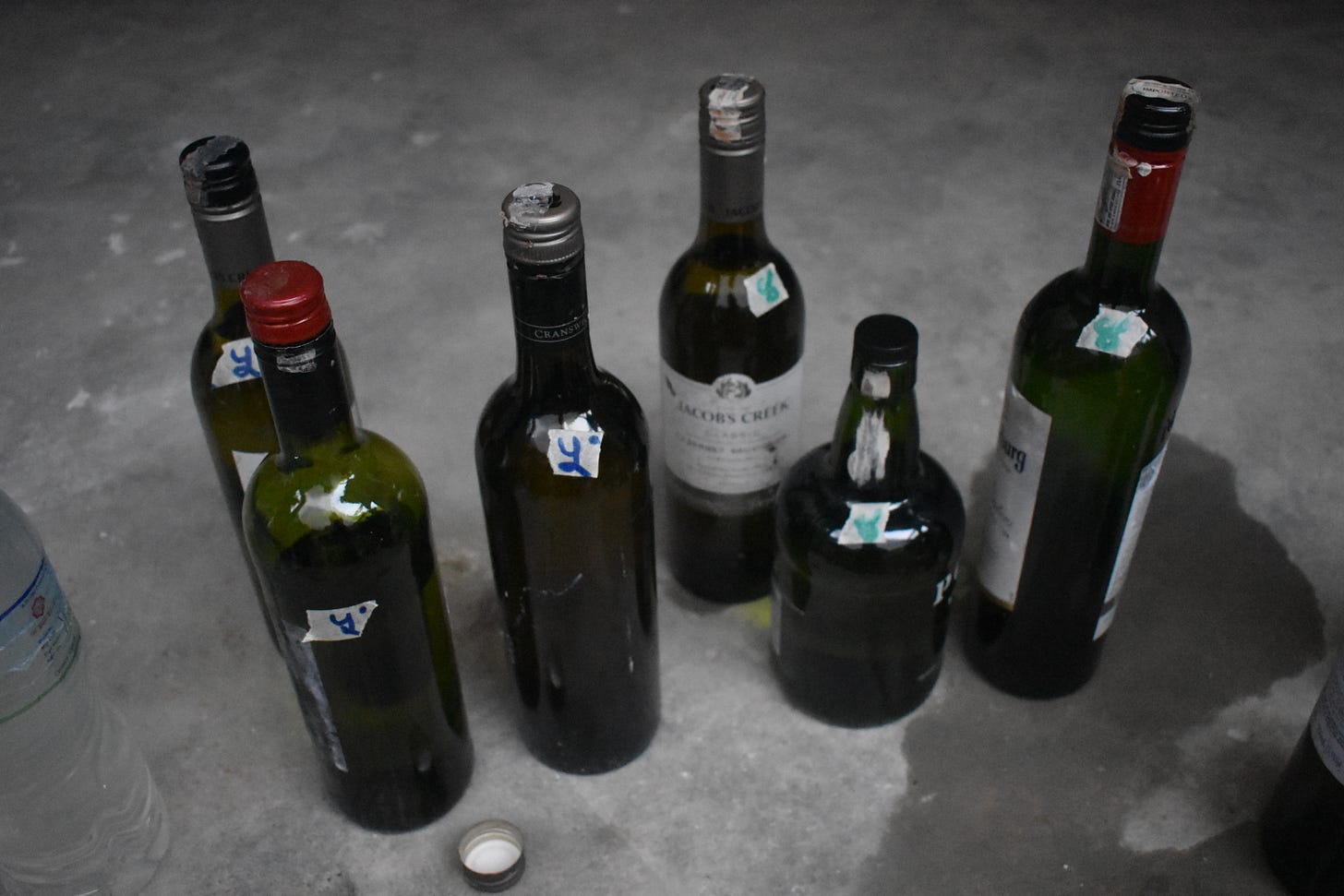Last Friday the landlord came over with two plumbers to see about the aforementioned now near-complete lack of water pressure.
Once they’d got started with things unscrewed and water splashing and the pressure pump going off and on, landlord went and fetched a bottle of aila—Newari home-made distilled alcohol—from his aunt next door. Then he ordered mo:mo and a truly excellent chicken chilli from the little catering kitchen in the basement. Their business is mostly delivering lunch boxes to nearby offices, but they’re rapidly becoming the building go-to for a quick bite.
It was an A+ landlording move. Instead of annoyance as the hours passed (and it did take hours), another neighbour and I chatted with him and enjoyed the delicious aila—smooth and subtly fruity—working our way through the snacks as water continued to soak everything I hadn’t been smart enough to remove from the bathroom and the very competent (and ultimately successful) plumbers ran in and out, up to the roof and down to other floors’ bathrooms.
Home made aila got me thinking of these photos I took in September of last year when, thanks to an friend’s invitation, I finally got to watch the process involved in making it. A group of younger Newars in Patan have formed a little co-operative that gathers a couple of times a year to make aila. Most of them had apparently only made it a couple of time before, but you wouldn’t know it from the end results.
Notes I took at the time tell me that the mash, made three weeks earlier, contained beaten rice, yeast and sugar cane solids of some kind (quite possibly there was more in there that I missed). And that it took 16 yoghurt scoops (16 litres) to make one to two litres of the good stuff, the strongest grade. The mash is then used to make more batches, each successively weaker.
It was fascinating to watch, as the photos below attest, and the group were welcoming, fun-loving, and patient with my questions. Making aila was much harder—and longer—work than I’d expected.
As night fell, people showed up with food, glasses were passed around. The warm, freshly-made aila was reminiscent of a smooth sake, and deceptively potent. Among the food there was an offal plate, replete with sliced green chillis and raw onion slices that I wrote was fabulous.
Also from my notes, said by a member of the group: “When it is open, when it is shared, when all gather, of course it is good quality.”
It’s one of the few times I’ve wished I was a Patan person.
On the page opposite the last of my notes from that day, in a handwriting that isn’t mine, is the following two-line recipe, which I admit I have yet to attempt:
*Jhaneko Raksi
(Butter, rice, cumin, Black pepper & Raksi)
